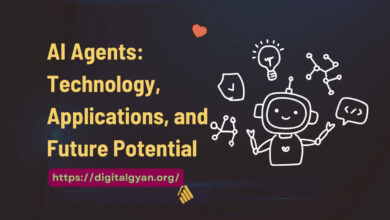5 Ways Data Can Be Stolen From Your PC or Network
With the increasing sophistication of cyber threats, it has never been more crucial to safeguard your personal and business information.
Data intrusions can have severe repercussions, such as monetary loss, reputational harm, and potential legal liability. Your PC or network is one of the most common targets for data espionage.
In this blog post, we will discuss five common methods by which hackers can steal data from your computer or network and provide you with steps to mitigate these risks.
1. Malware
Malware, a form of malicious software intentionally created to inflict harm or exploit computer systems, represents a prevalent technique employed by hackers for the purpose of illicitly acquiring data from computers or networks.
Malicious software, sometimes referred to as malware, has the capability to intercept the transmission of data between a user’s computer and a server. Its primary objective is to unlawfully acquire sensitive information, such as credit card details or login credentials. The aforementioned strategy is frequently employed in Man-in-the-Middle attacks, wherein the assailant strategically situates himself between the user and the targeted service.
2. Smartphone or Tablet
While they’ve banned USB storage devices, IBM has not announced any limits to that other popular portable storage medium: a smartphone. When set to mass storage mode, a smartphone can appear as a portable hard disk or USB drive to your PC.
Tablets and old MP3 players are recognised in a similar way. For IBM users, this affords an instant answer to their problem of being unable to use USB sticks. Perhaps the company recognises that they can detect what data was transferred to what device, knowing that phones can be associated with people in a way that USB sticks cannot.
Either way, anyone can copy data on an unlocked, unattended computer using just a phone and a USB cable.
3. Flash Memory Card
Flash memory has the potential to be utilized covertly for the purpose of data theft. In contemporary times, numerous gadgets incorporate card readers, which frequently facilitate the seamless alignment of the inserted media with the reader’s periphery. They have the potential to appear virtually imperceptible.
Similar to USB flash devices, these compact memory cards can be conveniently carried in one’s pocket, but require access to an unsecured and unattended computer. Imagine a scenario when an acquaintance utilizes your personal computer to peruse the images stored on their digital camera’s memory card. Although the individuals behind the creation of malware may not necessarily possess the explicit aim of directly pilfering data, it is plausible for the infection to be transmitted from the card onto your computer system.
4. Keyloggers
Keyloggers, also known as keystroke loggers or system monitors, are classified as surveillance technologies used to monitor and record all keystrokes made on a keyboard. Keyloggers are either software or hardware that capture every keystroke a user presses on his or her keyboard.
With the ability to record keystrokes, users’ private messages, passwords, identities, credit card information, and banking information are vulnerable to exploitation. Employers, law enforcement, and even parents can install keyloggers on a computer or network if they wish to monitor an individual’s online activity.
5. Phishing
Phishing refers to a form of social engineering assault wherein cybercriminals employ deceptive tactics, such as sending emails or text messages, to create an illusion of legitimacy, often imitating reputable entities like financial institutions or credit card companies.
Electronic communications, such as emails or text messages, frequently include a hyperlink that, upon activation, redirects the user to a counterfeit website designed to resemble the authentic website. Upon inputting personal information into the fraudulent website, hackers possess the ability to illicitly appropriate said data.
How to Secure and Protect Your Data
So, what data do you have on your computer? Video games? Artwork? An in-progress novel? Or something more valuable: customer data, commercially sensitive information, something that will cost you your job if lost?
Whether you’re concerned about data being stolen from your home PC or your work laptop, it is vital that you understand how it could happen. Your data is under physical risk in five ways that you should now be able to recognise:
- USB sticks.
- Smartphones, tablets, and MP3 players (connected over USB).
- Flash memory cards.
- Portable HDD and NAS devices.
- Removable media: optical disks, removable hard disk drives, tapes.
Understanding which devices can be used to store data on your computer is important. Don’t let it cloud what is useful, however. For instance, USB sticks can be turned into keys that unlock your PC.
If you’re concerned about the security of the data you’re using, consider using disk encryption. Using a work computer? If your employer expects you to work remotely on data stored centrally, ask them about setting up a VPN. This will improve data security considerably.
One last thing: although these devices can be used to steal data from your computer, they can also be used to introduce Trojans and malware. Ensure your internet security and antivirus apps are up to date!



